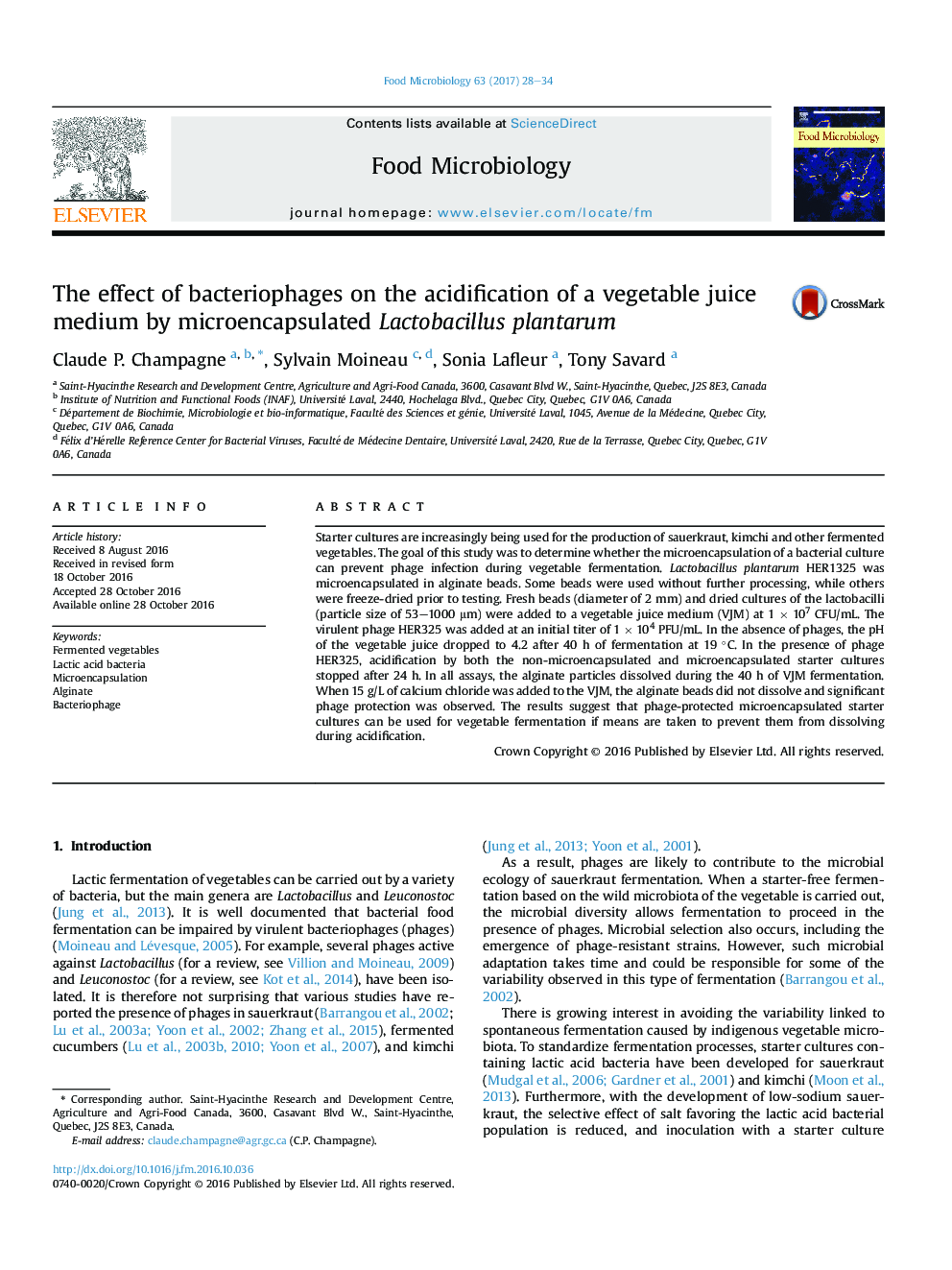| Article ID | Journal | Published Year | Pages | File Type |
|---|---|---|---|---|
| 5740167 | Food Microbiology | 2017 | 7 Pages |
â¢Repeated inoculation of lactic acid bacteria in vegetable fermentations could result in problems with bacteriophages.â¢Phages against Lactobacillus plantarum are stable in fermented vegetable juices.â¢Phages are not inactivated by high-shear homogenization for up to 2 min.â¢Alginate-based microencapsulation does not protect L. plantarum cells from phages during the fermentation because the beads dissolve.â¢Calcium salts added to the vegetable juice prevents dissolution of alginate particles during the lactic fermentation.â¢Calcium salts added to the vegetable juice enables the fermentation even in the presence of phages.
Starter cultures are increasingly being used for the production of sauerkraut, kimchi and other fermented vegetables. The goal of this study was to determine whether the microencapsulation of a bacterial culture can prevent phage infection during vegetable fermentation. Lactobacillus plantarum HER1325 was microencapsulated in alginate beads. Some beads were used without further processing, while others were freeze-dried prior to testing. Fresh beads (diameter of 2 mm) and dried cultures of the lactobacilli (particle size of 53-1000 μm) were added to a vegetable juice medium (VJM) at 1 Ã 107 CFU/mL. The virulent phage HER325 was added at an initial titer of 1 Ã 104 PFU/mL. In the absence of phages, the pH of the vegetable juice dropped to 4.2 after 40 h of fermentation at 19 °C. In the presence of phage HER325, acidification by both the non-microencapsulated and microencapsulated starter cultures stopped after 24 h. In all assays, the alginate particles dissolved during the 40 h of VJM fermentation. When 15 g/L of calcium chloride was added to the VJM, the alginate beads did not dissolve and significant phage protection was observed. The results suggest that phage-protected microencapsulated starter cultures can be used for vegetable fermentation if means are taken to prevent them from dissolving during acidification.
